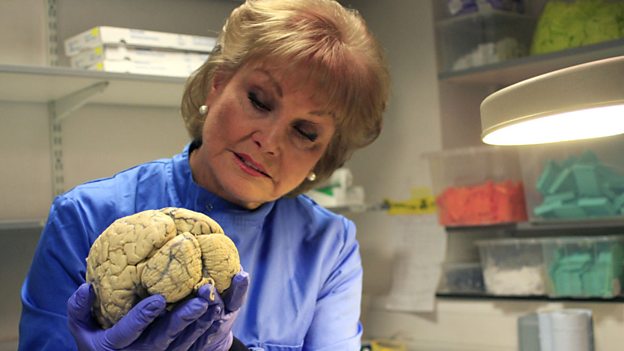
Realist reviews are a relatively new addition to the evidence arsenal. They identify and analyse primary research about complex interventions and programmes to build a picture of how the relationship between the context and mechanism of the intervention (not the intervention itself) leads to particular outcomes.
Handley et al conducted a realist review of dementia-friendly interventions to improve the care of people living with dementia in hospital (Handley et al, 2017). The objective of the review was to identify primary research and use its findings to develop explanations of what characteristics of dementia-friendly initiatives in hospitals make them work, in what circumstances, and why.
The first thing I noticed about this article because of my day job with the (shameless plug alert) EQUATOR Network is that the methods section said they had followed the RAMESES publication standards (Realist And Meta-narrative Evidence Syntheses: Evolving Standards). This was very pleasing.

Realist reviews look to answer the explanatory questions, e.g. How? Why? For whom? To what extent? In what circumstances?
Methods
The researchers defined the scope of the review by examining key articles from relevant literature and conducting stakeholder interviews. Stakeholders included people experienced in designing, implementing and using dementia-friendly interventions. They also conducted structured literature searches and extracted data from the identified studies.
The analysis and synthesis of the data from the interviews and the literature was used to refine explanations and programme theory about dementia-friendly interventions.
Results
There is a great bit of realist review jargon I learned through reading this paper: Context–Mechanism–Outcome configuration; or CMOc for short. It’s used as the unit of analysis to build and refine theories about how the characteristics and context of the interventions might achieve desired outcomes.
Six prominent CMOcs were identified:
1. Capacity to understand behaviours of people with dementia as communication of an unmet need
This worked best when endorsed by senior management, and staff recognised the value of their role in understanding and investigating the cause of challenging behaviours rather than controlling and restricting patients.
2. Experiential learning and creating empathy to encourage reflection
Training sessions could sometimes produce ‘lightbulb moments’ for staff; a sudden realisation of the problems faced by people living with dementia. However, care practices inspired by this type of training were often perceived as additional to the normal workload rather than an integral part of their role.
3. Clinical experts who legitimise priorities for care
Experts in dementia care with organisational authority acted as “change agents” and role models. They supported staff in person-centred care. However it appeared that the experts often retained responsibility for dementia care rather than creating a culture where all staff were responsible.
4. Staff with confidence to adapt working practices and routines to suit the patients
Giving staff freedom and time to get to know people with dementia and organise their work around their preferences and needs rather than the ward routine was linked to better outcomes.
5. ‘Special’ staff with responsibility to focus on psychosocial needs
Staff with a specific role for meeting psychological, emotional and social needs could engage people in therapeutic activities, supervise mealtimes etc. This improved a range of patient outcomes and reduced challenging behaviour. However, ‘specials’ were often junior team members without dementia training and this could result in a lack of interaction and increase patient distress.
6. Building staff confidence to provide person-centred risk management
Managing risk in a way that supported a person’s abilities, choices and independence improved mobility, reduced accidents, and improved patient satisfaction. For example, staff could introduce measures to allow patients to move around wards safely whilst monitoring them from a distance.

This review suggests that strategies such as dementia awareness training alone will not improve dementia care or outcomes for patients with dementia.
Conclusions
Although it’s a crucial element of interventions, training as a single strategy is not enough to influence staff to adapt the care they provide for people living with dementia.
Hospitals need to develop a culture where person-centred care is valued, and training in dementia should be also be aimed at a managerial level.
Organisations should also recognise and accommodate the impact on staff roles and workload to ensure care can be adapted to the needs of people with dementia.
Developing, refining and testing a programme theory for dementia-friendly hospitals was hampered by the lack of empirical evidence, limited descriptions of settings, characteristics of patients, and components of interventions. However, the programme theory that has emerged from this review has the potential to improve how interventions to support dementia-friendly care in hospitals are designed and evaluated in future.

A key component for improving care practices and patient outcomes is how staff are supported to implement learning and resources by senior team members with dementia expertise.
A gripe
The second sentence of the introduction states that “At any one time, 25% of hospital beds are used by people living with dementia, rising to a higher proportion on some wards”. This cannot be true, surely?
The reference is a report published by the Alzheimer’s Society (2009). The foreword by Angela Rippon says “A quarter of hospital beds are occupied by people with dementia”. Even Angela Rippon wasn’t enough to convince me (sorry Angela). The first sentence of the Executive Summary said “People with dementia over 65 years of age are currently using up to one quarter of hospital beds at any one time”. I can believe that some hospitals in areas with a large older population may have this proportion of patients with dementia, but this is not the same as a quarter of all hospital beds. I was disappointed that this error was not picked up in peer review and it should be corrected at the earliest opportunity.

Angela Rippon: usually a bastion of reliability, but on this occasion misinformed.
Links
Primary paper
Handley M, Bunn F, Goodman C. (2017) Dementia-friendly interventions to improve the care of people living with dementia admitted to hospitals: a realist review. BMJ Open 2017;7:e015257. doi: 10.1136/bmjopen-2016-015257.
Other references
Alzheimer’s Society. (2009) Counting the cost: caring for people with dementia on hospital wards (PDF). Alzheimer’s Society London, 2009.


Thank you for taking the time to blog our research, this is a great summary of our work.
I would just like to address the gripe. While I agree that Alzheimer’s Society 2009 might not be the best reference for the number of patients admitted to hospital who have a dementia, the statistic is widely used. For example, the Kings Fund state one in four hospital patients has a dementia (https://www.kingsfund.org.uk/blog/2011/10/lost-and-confused-improving-hospital-care-dementia-patients), Full Fact suggest 25% (https://fullfact.org/health/do-2-5-hospital-patients-suffer-dementia/) the Royal College of Psychiatrists estimate 31% (http://www.rcpsych.ac.uk/PDF/WhoCaresWins.pdf), and Sampson et al 2009 found 42% of patients aged 70 or over to had a dementia, although only half had a diagnosis (http://bjp.rcpsych.org/content/195/1/61.long). I will request that the reference is updated to reflect this.
I would also take this opportunity to say how much I enjoy your website and am very pleased to have our work included.
It was a pleasure. I thought it was a great piece of research. I am absolutely staggered by the 25% statistic, and yes, it would be good to update the reference because the main AS report you referenced said “up to” 25%, and so even if the statistic is correct, the main report didn’t support it, so it would be good to use a difference reference, and a more up to date one. I am sure in patients over 70 a large proportion will have dementia, diagnosed or not, but 25% of all hospital patients of any age still seems unlikely to me.
[…] also: Dementia care in hospital: training, leadership and culture change needed | The Mental […]
[…] also: Dementia care in hospital: training, leadership and culture change needed | The Mental […]
Great post, very interesting comments about culture change – perhaps this is needed in many parts of hospital working & not just in dementia. (I am reading In Shock by Dr Rana Awdish who finds many issues with the American healthcare culture too when she suddenly become a patient at her own hospital).
I have also found that awareness raising programmes like Dementia Friends can really inspire the “lightbulb moment” but agree they are often seen as in addition to normal workload & therefore not prioritized (understandably).
Thank you!
Great summary, really interesting (and I love the rise of the realist review – conducted one during my PhD!)
I worry that a far too often, hospital practice is based upon quantitative findings which favour the “normative patient” (i.e. not people with dementia). Unfortunately, that leaves a growing population with their needs not sufficiently met, and builds systemic barriers to providing appropriate care to suit the needs of patients with dementia. Realist reviews like this are so important in emphasising the need for truly patient-centred care, which includes being dementia friendly.